This post are some tips for how to use your lye-water! (https://blog.on-earth.one/2020/01/17/lye-water-from-my-ashes/)
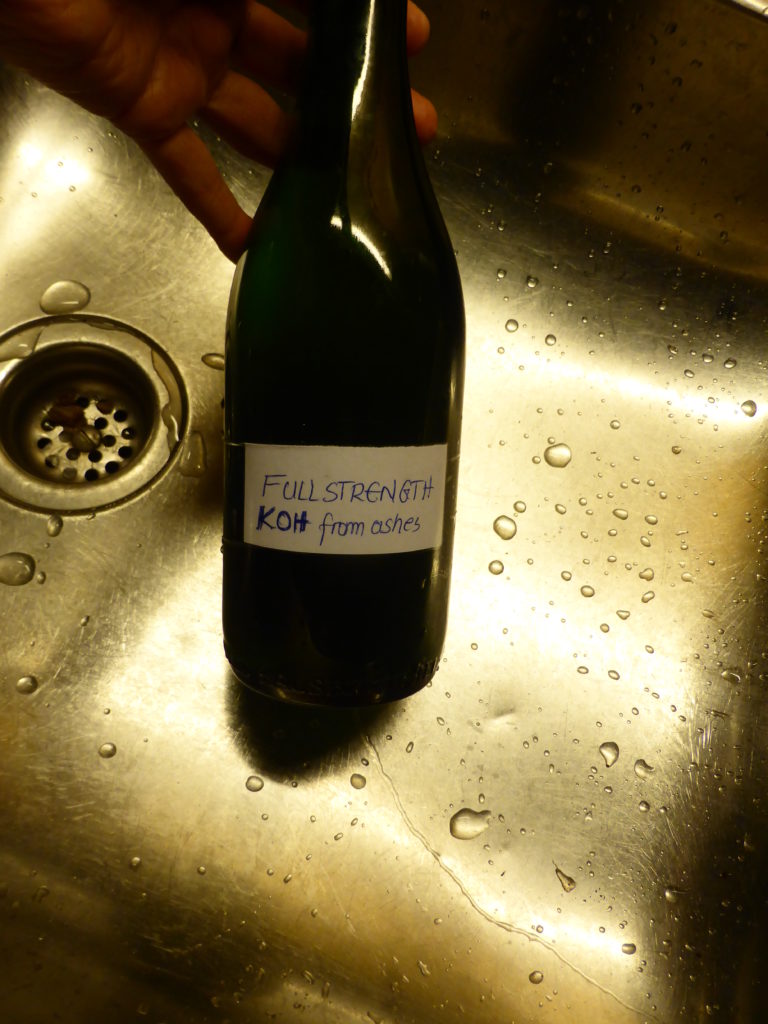

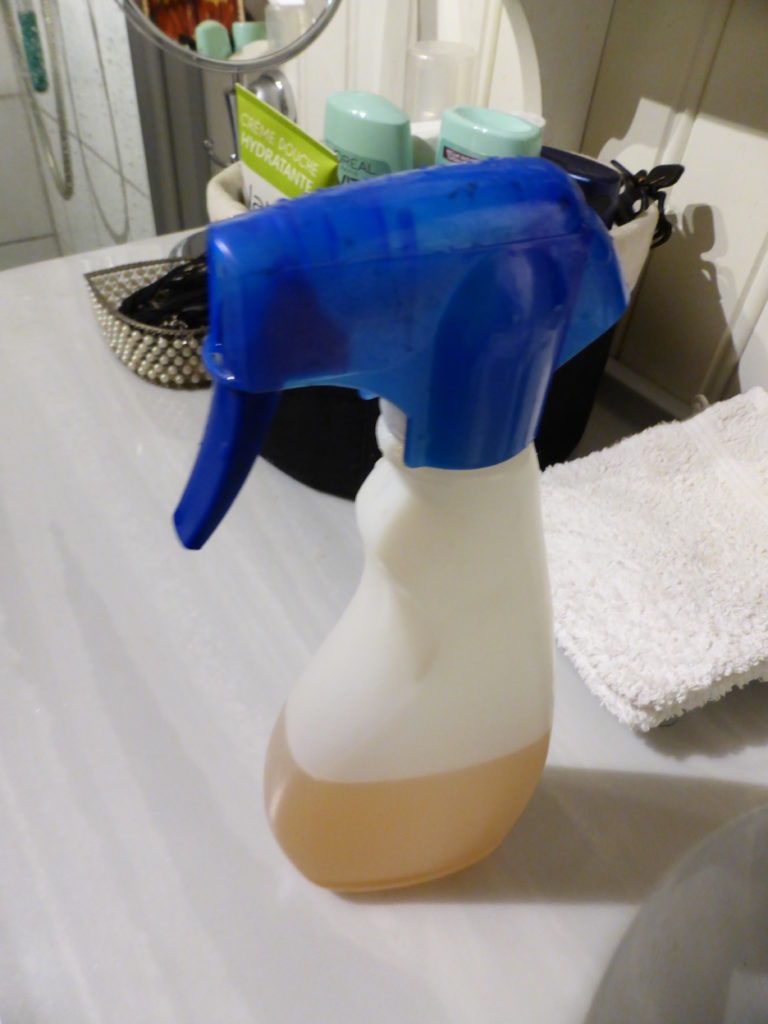
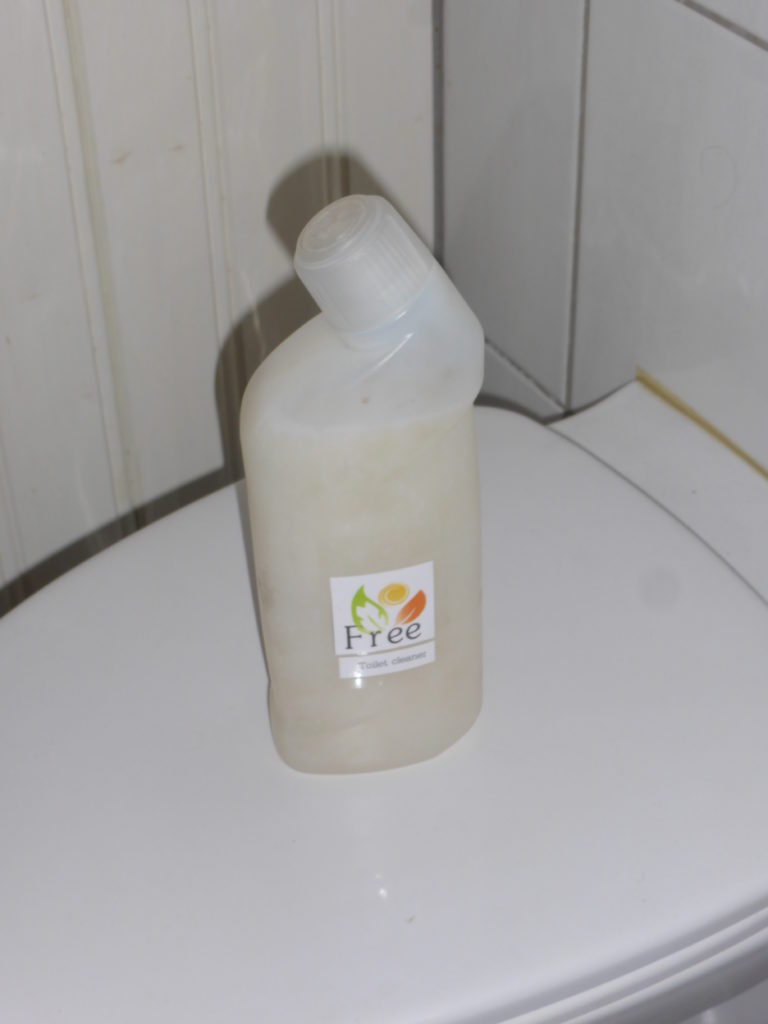
This post are some tips for how to use your lye-water! (https://blog.on-earth.one/2020/01/17/lye-water-from-my-ashes/)




Its a couple of weeks ago, I decided to give it one more try to make my own KOH (Kalium Hydroxide) water to use it for making soap or cleaning.
So you can see the procedure:
(Utensils: only stainless steel pots and spoons, soft water from rain, snow or distilled, ashes from hardwood, filters, googles, gloves. )
THIS is the difference between a industrial detergent and a homemade one. Mine, you CAN eat without ending up in the hospital, well it doesn’t taste super but it wont kill you cause its: soap, crystal soda and table salt!

Back to the Future depicts 2015 as a time where flying cars and hoverboards exist. Now it’s 2018 and we’re warning people not to eat detergent because it can literally kill you. The “tide pods are food” meme has taken off in a big, dangerous way. People, mainly teenagers, are regularly uploading videos of themselves eating the detergent to Youtube under the title “Tide Pod Challenge”. Tide and Youtube are desperately struggling to stop people from doing it. People are even reviewing them on Amazon as if they’re food, giving them five stars and calling them “delicious”.
“I’ve been using these for years as a flavor enhancer for my water,” another reviewer wrote.
“The only issue is that they have a hard time dissolving in my Yeti cup, so I’ve started extracting the liquid goo with a needle and then squirting it into my water. A couple shakes and it’s all mixed in. The flavor is incredible and curbs my appetite for the entire day! Since I’ve been drinking these I’ve lost about 75 pounds. I go through 5 or 6 pods a day though, and it gets a little pricey, but totally worth it.”
So far, so amusing. But surely no-one is really eating these, are they? What’s the real scale of the problem? Well, it turns out, it’s much bigger than is ideal. The American Association of Poison Control Centers (AAPCC) has put out a warning, after receiving a high volume of calls since the beginning of 2018.
“During the past five years, poison control centers have received well over 50,000 calls relating to liquid laundry packet exposures,” the AAPCC said in a statement.
“While unintentional misuse by children five and under accounted for the majority of these calls, a recent trend among teenagers ingesting the packets – and uploading videos to various internet platforms including video-sharing websites, social media, and vlogging platforms – has caused significant concern among poison control centers.
“According to AAPCC data, in 2016 and 2017, poison control centers handled 39 and 53 cases of intentional exposures, respectively, among 13 to 19-year-olds. In the first 15 days of 2018 alone, centers have already handled 39 such intentional cases among the same age demographic. Ingestion accounted for 91 percent of these reported exposures.”
You read that right – 9 out of 10 times calls to a poison helpline for ingesting detergent are from people who are doing it as a joke.
Youtube themselves are finally taking action too, announcing that they’ll be removing any videos of the Tide Pod Challenge. “YouTube’s Community Guidelines prohibit content that’s intended to encourage dangerous activities that have an inherent risk of physical harm,” the Internet giant said, according to The Guardian. “We work to quickly remove flagged videos that violate our policies.” Help Youtube out, people. Stop eating things that are only meant to be ingested by a goddamn washing machine.
(Forwarded from: https://nourishingjoy.com/homemade-dusting-spray-and-wood-polish/)
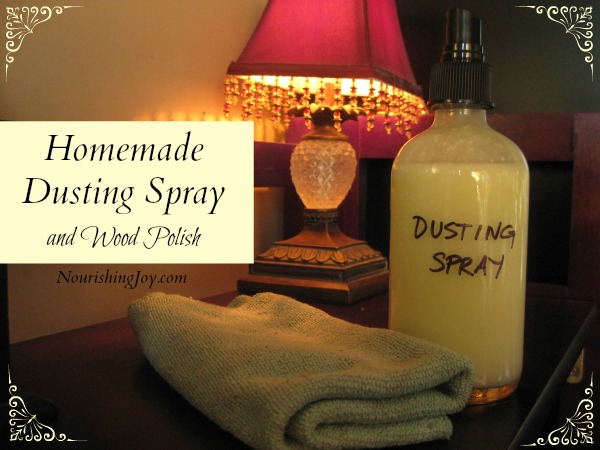
Despite what some may think when they walk into my house on any given afternoon, I actually really like to clean.
(It’s just the having to do lots of it every day that gets a little tiresome.)
One of the tasks I enjoy most is dusting. Perhaps it was because my mother taught me how to be a stickler and derive satisfaction from getting every piece of furniture completely clean. Or perhaps it’s just because the house simply looks and smells cleaner when I’m done. Whatever the reason, I enjoy it.
The problem is, however, that I haven’t always had the right tools to get the job done right. Either the dusting spray has left the furniture surface greasy or tacky, or has smelled noxious. And even when I did find a “natural” spray I liked, it cost a pretty penny.
So (as usual), I set about on a mission to figure out a homemade version. And (as usual) I started by flipping over my favorite products and looking at their ingredients.
I must say, this is one of the homemade products that I am MOST pleased with. I’ve been using it for a number of years now and even with various grubby toddler hands and lots of life happening in our house, the surfaces polish up beautifully without any residues.
Which reminds me – please check out these wood care notes. In doing the research for this recipe, I learned that there’s more to wood care than one might think!
Wood: Making It Shine – from Dr. Bronner’s
Mineral Oil vs. Olive Oil in Wood Care (see the comments of this post) – from Amy Bayliss
You can make a simpler dusting spray with just olive oil and vinegar (and essential oils, if desired). See below for details.
¾ cup water
1 T olive oil
2 T vodka (or white vinegar)
2 T white vinegar
1 T liquid glycerin (optional) – see where to buy glycerin
30-40 drops essential oil (clove, orange, lemon, etc)
¼ teaspoon xanthan gum – see where to buy xanthan gum
½ teaspoon emulsifying wax, melted – see where to buy emulsifying wax
Place the water, olive oil, vodka, vinegar, glycerin, and essential oils in a blender and blend on high. While the motor is still running, add in the xanthan gum and emulsifying wax. Process for 10-15 seconds until slightly thickened.
Pour into a spritz bottle and use once a week. Lasts up to 3 months.
3/4 cup olive oil
1/4 cup white distilled vinegar
30-40 drops essential oil, optional (clove, orange, lemon, etc)
Place in a large spray bottle and shake vigorously. Spray directly on furniture (being careful of overspray) and buff with a clean, dry cloth.
Olive Oil – Olive oil shines the wood and protects it. Olive oil has been used for millenia in this capacity, but some would argue that mineral oil should be used instead so that there’s no chance of rancidity. As usual, my opinion falls in the camp of “whichever option is more naturally derived and requires less processing is the best one.” Olives can be pressed by hand – mineral oil requires multiple industrial cleaners to extract and clean it from the crude oil brought up out of the earth. Therefore, I choose the former. You may choose the latter – it’s up to you (and I won’t think less of you for it).
Vodka – Vodka is the secret weapon in many of my favorite cleaning recipes, and in this case, is present to cut through grease and grime on the wood surface, then evaporates quickly so there’s no residue and no streaks.
White vinegar – White vinegar also cuts through grease and grime residues. It also acts as a mild disinfectant.
Liquid glycerin – Glycerin is an optional ingredient, but one that I really like to include whenever possible because it leaves a nicer shine on varnished and painted wood and I find it buffs more easily.
Essential oil (clove, orange, lemon, etc) – These are present merely for scent. They will certainly also impart whatever beneficial properties are inherent to that specific essential oil, but the purpose here is to make your home smell lovely and clean… in a natural, non-toxic way!
Xanthan gum – Xanthan gum is a thickener so that the homemade dusting spray has the same lovely viscosity as store-bought dusting sprays.
Emulsifying wax – This is present for two reasons: one, it acts as a binder so that the ingredients stay homogenous once they’re all blended together, and two, to provide a very slight protective coating on the wood. Waxes have long been used to seal and protect and the small amount here just fills in surface scuffs and scratches to give a smoother, glossier, protected finish.
And why emulsifying wax rather than beeswax? Well, they both work, but beeswax doesn’t firm up as nicely and is thus just slightly tacky. Beeswax is sometimes easier to source though, so it is an acceptable option.
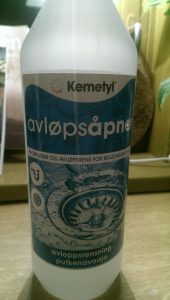 I shared already my concerns for the difficulty finding KOH while NaOH you find so easy… Unfortunately I have only ashes from softwoods so I cant make my own KOH, irritating… So, while I am waiting for my 6kg KOH from Germany, for making soft-soap, and I am not even sure if I am allowed as a private person to imports such things, I found today at a grocery what we call in Norway “avløpsåpner”, a drain-opener. And guess what? Its 40-60% KOH, the rest is water and nothing else!!!
I shared already my concerns for the difficulty finding KOH while NaOH you find so easy… Unfortunately I have only ashes from softwoods so I cant make my own KOH, irritating… So, while I am waiting for my 6kg KOH from Germany, for making soft-soap, and I am not even sure if I am allowed as a private person to imports such things, I found today at a grocery what we call in Norway “avløpsåpner”, a drain-opener. And guess what? Its 40-60% KOH, the rest is water and nothing else!!!
So I ran and made a softsoap with oliveoil and coconutoil , and now its “cooking”, meaning I am spreading up the curing process by making a hot process soap.
This soap is going to be a beautiful shampoo =)
Use Vit E to extend its best before!!